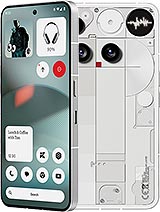Unless you are a fan of foldables, most of the exciting launches for the first half of the year happened months ago – and those phones have been steadily falling in price since.
The initial S25 trio is crossing over into the second half of its first year and the price drops have accumulated to quite significant levels – the flagships are now well below their launch prices. This excludes the Edge model, which only arrived later.
Starting with the Samsung Galaxy S25 Ultra, it’s almost €500 off, pushing it under €1,000. It will remain the best camera phone from Samsung for 2025 – the only phone with S Pen support too.
The Samsung Galaxy S25+ also has a major discount going on and can be bought for under €800. It’s not as slim and light as the Edge, but it does offer longer battery life paired with faster charging.
The Samsung Galaxy S25 has dipped under €600. It’s one of the few remaining small flagships after Sony and Asus bailed on the market – and it’s a good deal cheaper than an iPhone 16 Pro.
The Poco F7 offers Snapdragon 8s Gen 4 performance at just €400. It has a large 6.83” display and it’s a great quality panel – 1280p+ resolution, 12-bit colors with Dolby Vision and 3,200 nits peak brightness. And it has a massive battery with 6,500mAh capacity and 90W fast charging. And the camera… uh, did we mention how big the battery is?
Then there’s the Poco F7 Pro with a Snapdragon 8 Gen 3 chip. It has a smaller 6.67” display but bumps the resolution up to 1440p+. And the 50MP camera has a larger 1/1.56” sensor (vs. 1/1.95”). The battery is a bit smaller at 6,000mAh, but that’s still plenty and it keeps the 90W fast charging. Check out our detailed Poco F7 vs. F7 Pro comparison for a closer look.
Instead, here we will focus on the OnePlus 13R. Unfortunately, it only has a token discount, but even so it is only €75 more than the F7 Pro and offers the same Snapdragon 8 Gen 3 chip. However, it has a larger 6.78” display – a 10-bit LTPO panel for more flexibility in the refresh rate – and a comparable 6,000mAh battery with 80W charging. The camera, however, adds a 50MP 2x/47mm telephoto to the 50MP main (1/1.56”) and 8MP ultra-wide, which may give it a leg up for some.
You have to go up to the Poco F7 Ultra to get a 50MP 2.5x/60mm telephoto lens in addition to a 50MP main (1/1.55”) and a higher resolution 32MP ultra-wide. Admittedly, the biggest reason to pay up to the Ultra is to get the flagship Snapdragon 8 Elite chip. Note that you lose some battery capacity (it’s 5,300mAh), but you get both fast wired (120W) and wireless (50W) charging. The 13R lacks the wireless option. On the topic of Poco F7 Ultra vs. F7 Pro, we have this head-to-head comparison article.
Then there’s the new Nothing Phone (3), which is over €100 more than the F7 Ultra, even with the current discount. Now, the F7 Ultra is no beauty, but at least it doesn’t look like the Nothing flagship. Some might challenge the “flagship” label as this phone has a Snapdragon 8s Gen 4 chip and a non-LTPO 6.67” 1260p+ 10-bit display. At least the cameras are comparable with a 50MP main (larger 1/1.3” sensor), 50MP 3x telephoto and 50MP ultra-wide. The 5,150mAh battery is close in terms of capacity, but charging is slower – 65W wired and 15W wireless.
We may get a commission from qualifying sales.











